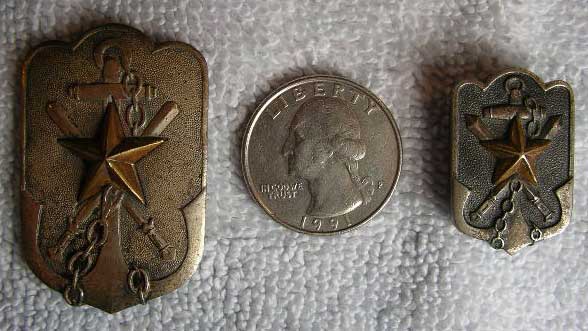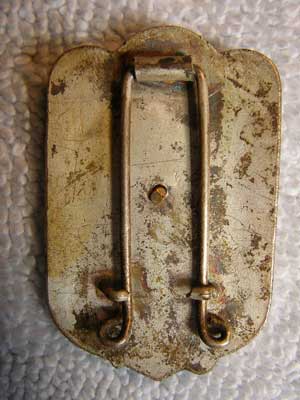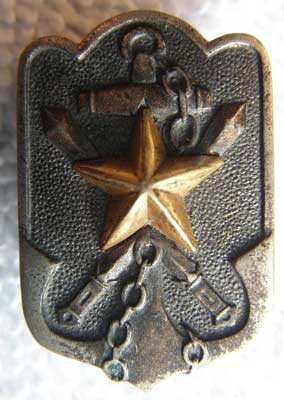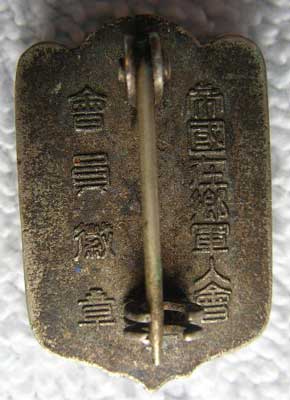Nambu World: Imperial Reservists’s Association Badges
(under construction-much more to
come!)
All men in Japan who had passed the medical to
join the service were eligible to join the Imperial Reservists’ Association
(IRA), even if they were not actually selected to serve (until fairly late,
most of those who passed the medical were not chosen to serve). Almost everyone
did join, especially in the countryside, where peer pressure was strong, and
among those who worked where there was a factory IRA branch set up. Here are
two membership badges for the IRA. For more details on them, see the OMJAS
book, page 111, Figure 202. I have shown them here with a US quarter for scale.
In Japanese the organization was called the Teikoku
Zaigo Gunjinkai. For more information on it, I strongly recommend the book A Social Basis for Pre-War Japanese
Militarism by Richard J. Smethurst.

This
is the larger one. It is about 27mm by 42mm. It seems to be either made of silver
or silver-plated. The brass star is a separate piece.

Here you can see the attachment mechanism and,
in the centre, the little bit of bent brass that holds the star in place.

This is the smaller badge, about 18mm by 27mm.
The brass star is, again, a separate piece of metal, though permanently joined
by the same bent over pin as the one above.

The back of this one has two columns of
characters. The right column is the name of the organization in Japanese, teikoku zaigo gunjinkai. The left column
says kai-in ki-sho, or “member’s
badge”. In the rural areas where most Japanese lived before the war, the IRA
assumed, which contained almost all the able-bodied local males, came to take
over most local service duties and hence earned enormous support for the
military in these areas.

To return to the base page on
Medals, please click here: Nambu
World: Japanese Medals
To return to “Other Japanese
Militaria”, please click here: Nambu
World: Other Japanese Militaria
To return to the home page, please
click here: Nambu World: Teri’s WWII Japanese
Handgun Website
Last updated: July 15, 2006. All contents are copyright Teri
unless otherwise specified and may not be used elsewhere in any form without
prior permission.